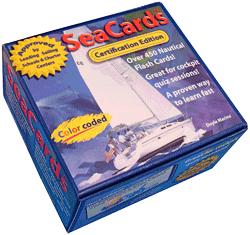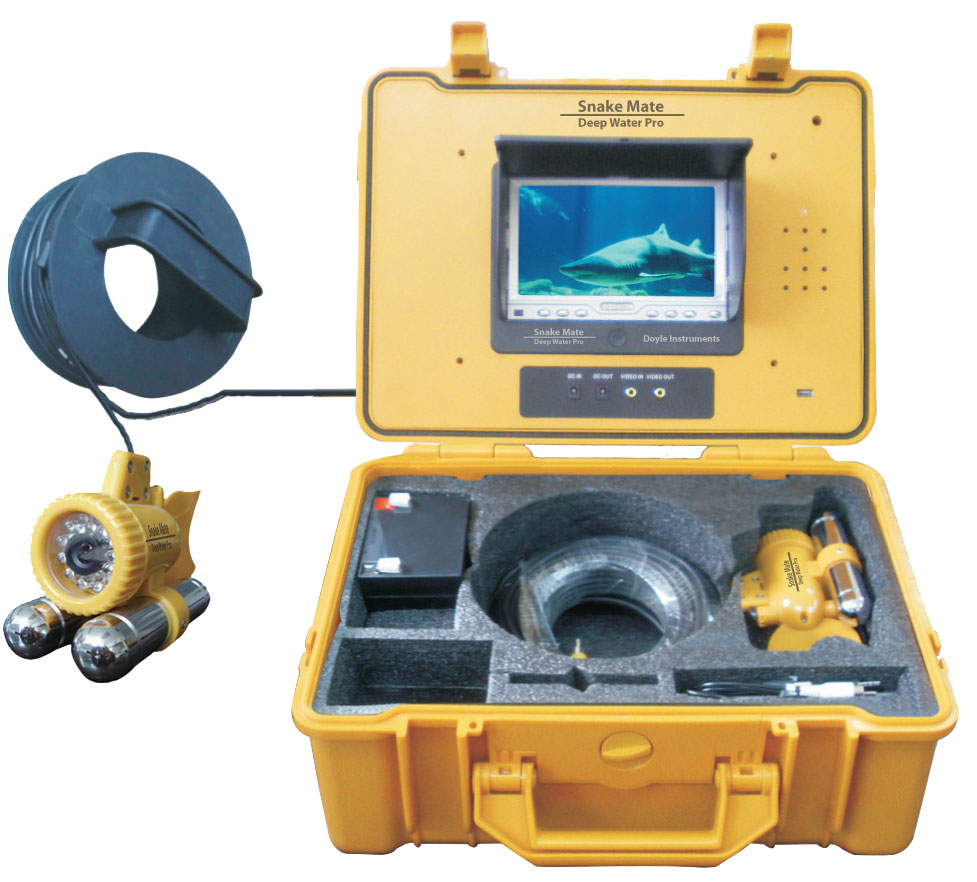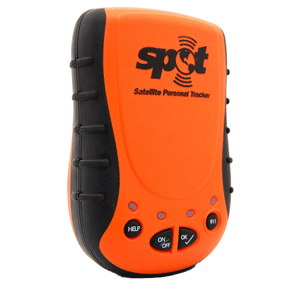 |

 
|
 |
Didn't find what you want? Send us your list. We carry 1,000's of products not yet listed at the best prices.
Your satisfaction is our top priority. If for any reason you are
dissatisfied with your purchase, we will replace, exchange or refund
the item within 30 days. Note: Some custom orders may not qualify - terms for custom orders are stated
clearly at the point of sale.
Doyle Marine appreciates your business. We respect your privacy and do not share
customer contact information.
Contact us with
questions, comments or reviews at:
info@doylemarine.com or 510-253-5883
|
|  |
Learning to Sail the USA Way
by Ken Jones
The syllabus can be readily divided into two parts. The Keelboat Sailing Certification Program is made up of seven stages while Small Boat Sailing Program contains a further two stages.
The Basic Small Boat Sailing Standard requires no previous experience or qualifications. It is the first course in the Small Boat Sailing Program. Students must demonstrate a theoretical knowledge of the names and functions of various parts of a boat together with common sailing terms, the sail and its ancillary components, the International Rules for Collision Prevention both at sea and on inland waters and hey should demonstrate a basic knowledge of safety procedures. On the practical side they must show they can tread water for 5 minutes and swim 100 metres, rig, launch and retrieve the boat, set and trim the sails, sail both upwind and downwind, tack and gybe, correctly apply the rules of the road, recover a man overboard, recover from a capsize, accept and pass a towline, tie four specified Knots within a given time. Upon completion he or she will be able to sail a centerboard or multihull sailboat in light to moderate winds and sea conditions in familiar waters.
The first course in the Keelboat Sailing Certification Program is known as Basic Keelboat. No experience or qualifications are necessary. To complete the course students will be required to demonstrate that they can put a name to and describe the workings of various parts of a boat including the hull, keel, deck bow and stern. The components of both the running and standing rigging. The different sails including the names of part of a sail - foot, leech, luff, head, tack and clew. The various spars, mast and boom. They will be familiar with sailing terminology used to describe various manoeuvres such as gybing and coming about. Students will understand the points of sail be it close hauled, reaching or running. They will understand the basics of collision avoidance including rules of the road. They will demonstrate they are familiar with regulations covering registration and identification, proper waste disposal, who to notify in the event of an accident and what safety equipment is requires by law to be carried on a vessel and how it is used. They will be able to demonstrate a knowledge of buoyage Participants will know how to anchor a boat and describe the choice of anchors and their attributes and failings. On the practical side they must demonstrate sail handling skills, they will display competence at the helm including mooring, sailing both upwind and downwind together with a successful tack and gybe. They will complete a successful man overboard recovery. They will show they know how to tie 6 different knots and understand their various uses. Upon completion of the course students should be able to sail a boat of some 20 feet in length in moderate winds in familiar waters.
The second stage is called Basic Coastal Cruising and students must hold the Basic Keelboat Sailing Certificate prior to undertaking this course. The course looks at safety on board including equipment and procedures. An understanding of fire prevention and fighting is required. Students will be required to demonstrate a knowledge of first aid and the treatment of hypothermia. Basic meteorology is considered and students must demonstrate an understanding of shipping forecasts. An understanding of the relationship between the skipper and crew and the respective duties of each is required. Students must be able to undertake basic chartwork including depths; types of bottom, hazards, bouys, beacons and lights. The practical side of this course looks at boat handling under power and sail, man overboard recovery, the various points of sail, reefing and heaving to, docking and mooring and some knot work. When completed the sailor should be able to cruise safely in regional waters on a sailboat of up to 30 feet in length, in moderate winds and sea conditions.
Trailerable Multihull Standard, this course is the second in the Small Boat Sailing Program. It may be taught as part of or following the Basic Coastal Cruising course. Completion of the Basic Keelboat is a prerequisite prior to taking this course. On the theory side students must be able to identify and name the various parts of a multihull that are not found on a monohull including the different wing decks, hulls, cross arms, three point rig, bridle line, safety nets, seagull and dolphin strikers. They will be aware of the advantages and disadvantages of multihulls including, performance, comfort safety and the danger of capsize. On the practical side the sailor will demonstrate: how to cast of and leave the quay with at least two different wind directions relative to the bow and then return and berth alongside, pick up a mooring buoy, manoeuvre in a restricted space, reverse, recover a man overboard, the different points of sail, tacking and gybing, sail a compass course within 10 degrees. They will anchor in the following ways, bow anchor and bridle and single bow with a stern line to the shore. When completed sailors are able to cruise safely in local and regional waters as both skipper and crew on an auxiliary multihull sailboat of up to 30 feet in length, in moderate wind and sea conditions.
Bareboat Chartering is the next stage. Participants are expected to hold the Basic Coastal Cruising Certificate before doing this course. The theory side covers the preparation of both crew and boat for a one week cruise including the preparation of a passage plan. Meteorology is considered including a look at fog and onshore and offshore winds. Seamanship is looked at and students should know what action is required if the engine fails, they should know how to anchor the boat bow or stern to. On the practical side the student will be able to undertake daily and weekly maintenance tasks, manoeuvre the boat under power in a restricted space, pick up a mooring buoy, use the VHF radio. The following navigational skills are required, plotting a course and establishing the compass heading and calculating an estimated time of arrival. Establishing a fix using visual bearing. Use a chart to pilot the boat into an unfamiliar harbour. Students must obtain and interpret a shipping forecast. When completed the individual can act as skipper of a boat up to 50 feet in length sailing by day in coastal waters.
The next stage is known as Coastal Navigation. This is a theory only course and no prior experience or knowledge is required. Students will be required to demonstrate knowledge of various State and Federal regulations pertaining to sailing. They must understand how the use navigational instruments including both steering and hand bearing compasses, binoculars, depth sounder, log, parallel rule and dividers. Participants must display an understanding of tide tables and their use when dealing with secondary ports. They should be able to convert bearings and compass courses between, compass, magnetic and true, plot a dead reckoning position, understand the effect of current and leeway when estimating a position and plot a position by two or more bearings, a running fix and a bearing and distance. Finally they will need to demonstrate a knowledge of buoyage and lights.
The Cruising Catamaran course deals exclusively with multihull sailing and concentrates on the differences a sailor finds as opposed to monohull sailing. Participants should have completed the Bareboat Chartering stage. On the theory side students must be able to identify and name the various parts of a multihull that are not found on a monohull including the different wing decks, hulls, cross arms, three point rig, bridle line, safety nets, seagull and dolphin strikers. They will be aware of the advantages and disadvantages of multihulls including, performance, comfort safety and the danger of capsize. On the practical side the sailor will demonstrate: how to cast of and leave the quay with at least two different wind directions relative to the bow and then return and berth alongside, pick up a mooring buoy, manoeuvre in a restricted space, reverse, recover a man overboard, the different points of sail, tacking and gybing, sail a compass course within 10 degrees. They will anchor in the following ways, two anchors of the bow or stern, bow anchor and bridle, single bow with a stern line to the shore and bow to fixed mooring. Upon completion the person can skipper a multihull sailboat of up to 50 foot in length by day in coastal waters.
Advanced Coastal Cruising follows and participants should have completed both the Bareboat Chartering and Coastal Navigation stages. Students will be required to demonstrate a comprehensive knowledge of the theory of sailing, an understanding of meteorology including the various cloud formations and the weather that can be expected with each. They will understand the needs of heavy weather sailing, the necessary sail changes and the use of the correct safety equipment and procedures. They will be able to describe: how set a second anchor to reduce swinging, how to recover a fouled anchor, how to use a trip line and an anchor buoy and when and how to set an anchor watch. They will describe how to tow or be towed. They will have a knowledge of distress signals. Students will correctly describe the actions required in the following emergency situations: a dismasting, running aground on a lee shore and engine failure. Students will be able to carry out maintenance and repairs on the engine. On the water students must: sail on all points of the wind and tack and gybe in a wind of at least 15 knots, sail a compass course to within 10 degrees, carry out a man overboard recovery in darkness. They will demonstrate their ability to set, sail with including a gybe, douse and pack a spinnaker. And finally they will stand a navigation watch of 20 miles both at day and night. When completed a person can skipper a sailing vessel of up to 50 feet in length both during day and night in coastal waters regardless of weather and sea conditions.
The next stage is called Celestial Navigation. The course is theory based and requires no experience or prior qualifications. The student must be able to demonstrate the Celestial Navigation required to navigate a sailboat on an offshore passage. The successful student will have demonstrated their ability to: Convert longitude into time and standard time and zone time to GMT. They will be able to calculate: the zone time given longitude, the chronometer error given a previous error and the daily rate, the time of meridian passage of the sun and calculate the boat's latitude from the observed meridian altitude of the sun, the times of sunrise, sunset and twilight, plot celestial lines of position on a Mercator projection or on a universal plotting sheet and the true bearing of a low altitude celestial body in order to determine the error and deviation of the compass. The student will be able to apply the corrections for index error, dip of the horizon, and total correction to convert sextant altitudes of the sun, stars, planets, and moon to true altitudes, determine the latitude at twilight by means of the Pole Star and the approximate azimuths and altitudes of the navigational stars and planets at twilight. In addition they will be capable of solving the navigational triangle using a navigation table and advance the LOP obtained from a sun sight to another LOP obtained from the sun at a later time and find the boat's position using a running fix (sun-run-sun).
This celestial theory can be put into practice during the Offshore Passage Making course. Entrants should be certified to the Advanced Coastal Cruising level. The student will plan a passage across either the Pacific or North Atlantic using Great Circle Plotting Charts and Climatic Charts. They must show an understanding of the essential factors to be considered when selecting a vessel for an offshore ocean passage of at least 1000 miles including hull construction and shape, keel, rig, and rudder type, fuel and water capacity. They must provide a list of tools and spares required for such a voyage. They must victual the boat for four people on passage for seven days. They must list the items to be carried in the first aid kit and describe basic treatments for injuries and illnesses that may occur together with identifying a source of mare advanced medical information while on passage. They will prepare a watch keeping system and define the duties of crew members both on and off watch. They will design a maintenance plan to cover: Bilges, electronic equipment, fuel system, hatches, galley equipment, rigging, safety equipment sea cocks, steering and the water system. They will describe the procedures to be undertaken in the following emergency situations: abandon ship, dismasting, fire onboard, lightning strike, man overboard. A comprehensive knowledge of the International Regulation for Preventing Collision at Sea must be demonstrated. When the course is completed is the sailor cans skipper a sailing vessel on offshore passages in any weather.
Ken Jones runs a sailing site. To find an ASA Sailing Course in your area visit the Marine Directory.
Article Source: http://www.articledashboard.com/Article/Learning-to-sail-the-USA-way/25756
|
 |
|
|
 |
Specials |
 |
 |
Best Seller - CURRENTLY OUT OF STOCK

SeaCardsTM Certification Edition
CURRENTLY OUT OF STOCK Now just $24.95
Over 450+ Color-Coded
Nautical Flash Cards from basic to advanced. Makes a great gift!
Our 6th Printing - 4th Edition!
More Info...

Explore the world beneath you with
The Snake MateTM Deep Water Pro High resolution 7" color display, waterproof Sony CCD color underwater
fishing camera - inspection camera, infrared night vision
with 30m (over 98 feet) of waterproof cable!
Professional use or just plain fun - your choice!
More info....

SPOT Satellite Personal Tracker and Messenger You and your loved ones have peace of mind knowing help is always within reach! You can check-in, they can track progress, you can request help and you can send an emergency alert.
Very affordable at only 92.88!
|
 |
| |
|
|
 |